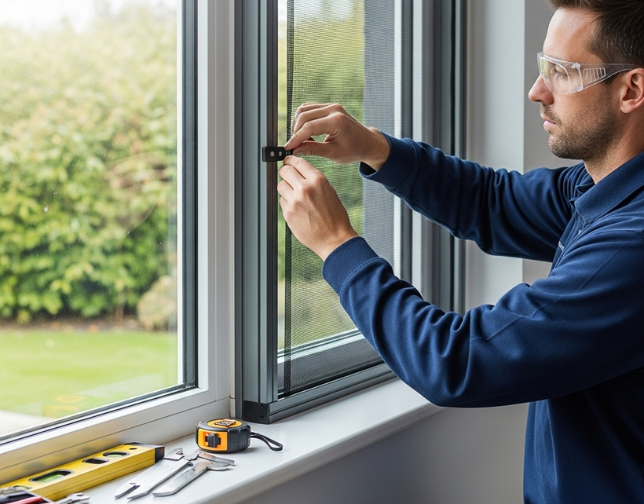Clean Buildings, No Birds: Bird Spikes That Work
- malik tanveer
- Aug 7
- 3 min read
Updated: Aug 8
Introduction: The Problem with Birds on Buildings

Birds may be a welcome sight in nature, but when they begin to perch and nest on buildings, they can quickly turn into a major nuisance. Urban environments are especially attractive to birds like pigeons, sparrows, and starlings, which often flock to ledges, rooftops, and signage. Unfortunately, their presence leads to a host of problems—accumulated droppings that deface buildings, damage from nesting materials, blocked gutters, and health concerns from bacteria and parasites. One of the most effective and humane solutions to this growing issue is the installation of bird spikes.
What Are Bird Spikes?
Bird spikes are long, needle-like rods made from stainless steel or durable plastic that are fixed along building edges and other perching hotspots. Though they may appear harsh at first glance, they are actually a safe and non-lethal bird control method. The design prevents birds from comfortably landing or nesting on surfaces, thereby encouraging them to move elsewhere. Because the spikes don’t harm the birds but simply deter them, this method is widely accepted by animal welfare organizations and property owners alike.
Why Bird Spikes Are So Effective
The simplicity of bird spikes is what makes them so effective. A bird cannot find a safe location to stand or build a nest when it tries to land on a spike-lined surface. Once erected, bird spikes require little to no upkeep, in contrast to netting or electronic repellents. They are a long-lasting solution since they are resistant to rust, rain, and UV light. Because they provide both practical and visual deterrence, bird spikes are the preferred option for many residential and commercial buildings.
Ideal Locations for Bird Spikes
Bird spikes can be installed in a variety of locations to deter birds from settling. Common installation points include window sills, rooflines, chimneys, signs, air conditioning units, and other architectural features that provide flat or narrow resting places. Public buildings, office complexes, warehouses, schools, and shopping centers frequently use them to maintain cleanliness and prevent costly damage. Spikes are particularly useful in historical buildings where other invasive bird control methods may not be allowed.
Types of Bird Spikes Available
The market offers a variety of bird spikes installation that are suited to varying bird sizes and infestation levels. Because they don't rust and are almost undetectable from a distance, stainless steel bird spikes are well-liked for their longevity and little visual effect. Spikes made of polycarbonate are more affordable and frequently used in homes. While some spikes are better suited for tiny birds like sparrows or pigeons, others are made especially for larger birds like gulls and crows. The bird species and the building's architecture determine which kind of spike is best.
Installation: A Simple Yet Strategic Process
Installing bird spikes is straightforward, but placement matters. Spikes should cover the entire width of the ledge or surface to be effective. Gaps in the coverage can provide birds with landing space, reducing the overall impact. The spikes can be glued, screwed, or tied down depending on the surface material. For best results, it’s recommended to clean the area thoroughly before installation, removing any existing droppings, nests, or debris. Some professional pest control companies also offer bird spike installation services for larger or more complex sites.
Advantages Beyond Bird Deterrence
While the primary function of bird spikes is to prevent birds from landing or nesting, they also offer broader benefits. By keeping birds away, spikes help maintain the visual appeal of buildings and protect property value. They reduce the need for frequent cleaning, prevent the spread of disease from bird droppings, and protect HVAC systems and wiring from nesting materials. Over time, the investment in bird spikes pays for itself by saving on maintenance and repair costs.
A Humane and Eco-Friendly Solution
The compassionate nature of bird spikes is among the strongest arguments in favor of their use. Bird spikes don't hurt birds like poisons or traps do; they just take away their ability to perch or roost. Because of this, conservation-minded organizations favor them, particularly in urban areas where numerous bird species are protected. Property owners can accomplish their objective of maintaining clean, bird-free buildings in this way without having an adverse effect on the local animal populations.
Conclusion: Clean Buildings Without Compromise
In cities and towns around the world, the problem of birds nesting on buildings continues to grow. Fortunately, bird spikes offer a tried-and-true solution. They are easy to install, long-lasting, low-maintenance, and above all, effective. Whether you’re dealing with a few pigeons or a larger infestation, bird spikes provide a humane and efficient way to protect your property. For clean buildings with no birds, this is a solution that truly works.


Comments